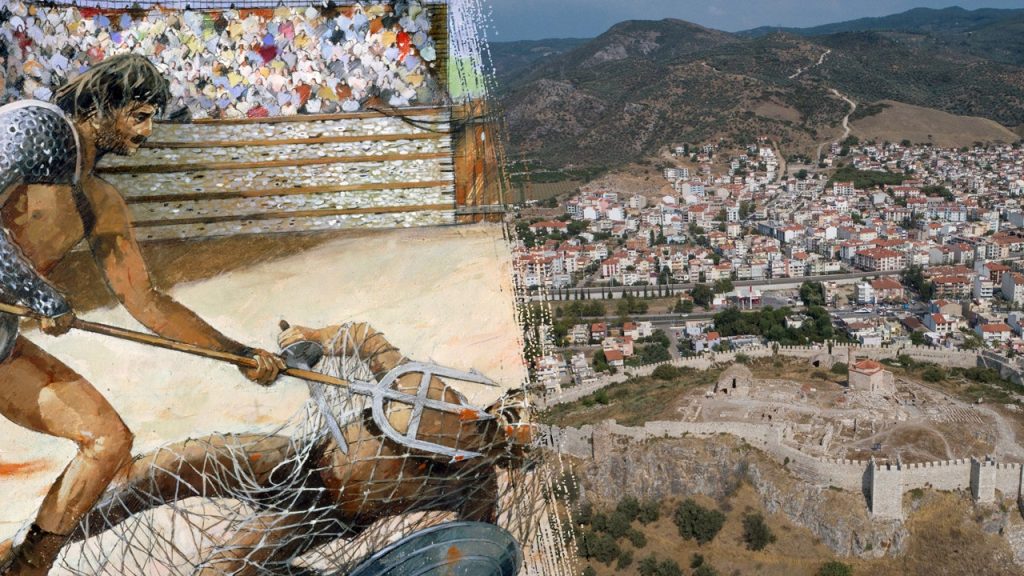In Turkey, archaeologists discovered a tomb dating back to the third century B.C. containing the remains of 12 individuals. The tomb was found during the excavation of St. John Monument in Selcuk, Izmir, Turkey, led by associate professor Sinan Mimaroglu. It was determined that the tomb was reused during the fifth century A.D. to hold the remains of the 12 men and women. The Roman gladiator buried in the tomb was named Euphrates, and gladiators in ancient Rome were professional fighters who engaged in battles in front of crowded arenas.
Gladiators were initially enslaved peoples or criminals, but as the popularity of gladiatorial combat grew, men began to voluntarily sign up to participate. Gladiators would typically engage in one-on-one combat under the watchful eye of a referee. Historians estimate that around one in five or ten battles ended in the death of one combatant, and many gladiators only lived to their mid-20s. Tombs similar to Euphrates’ have been found in Istanbul, Marmara Island, and Syria. Inside the recently unearthed tomb, crosses carved within the tomb dated back to the fifth century, with additional carvings added in the seventh and eighth centuries.
Little is known about the 12 individuals buried inside the tomb, but it is believed that they came from an upper-class background. The burial inside the church suggests that they likely belonged to the upper class or clergy, as ordinary individuals would not have been buried in such a meticulous manner within a church. The discovery of the tomb provides insight into ancient burial practices and the ancient city of Ephesus. The finding holds significance in terms of increasing researchers’ understanding of the ancient city and its inhabitants.
The Hoxne Hoard is the largest collection of Roman treasure found in Britain, dating back to the Roman era. The Staffordshire Hoard, with 4,000 items, is the largest collection in history of its kind. The discovery of the tomb in Turkey adds to the growing body of archaeological evidence shedding light on the lives of ancient Romans and their burial traditions. The carving of crosses within the tomb suggests the religious beliefs of those buried inside and adds to the understanding of the cultural practices of the time.
Gladiators in ancient Rome underwent intense and expensive training and were costly to replace, leading to a decrease in battles fought to the death as the popularity of the games increased. The tomb containing the remains of the Roman gladiator and 11 others offers a glimpse into the lives and customs of ancient Romans. The finding contributes to the broader knowledge of the practices of ancient civilizations and adds to the historical record of gladiatorial combat in the Roman Empire. The discovery is significant in enhancing our understanding of ancient burial practices and the social hierarchy of the time.


